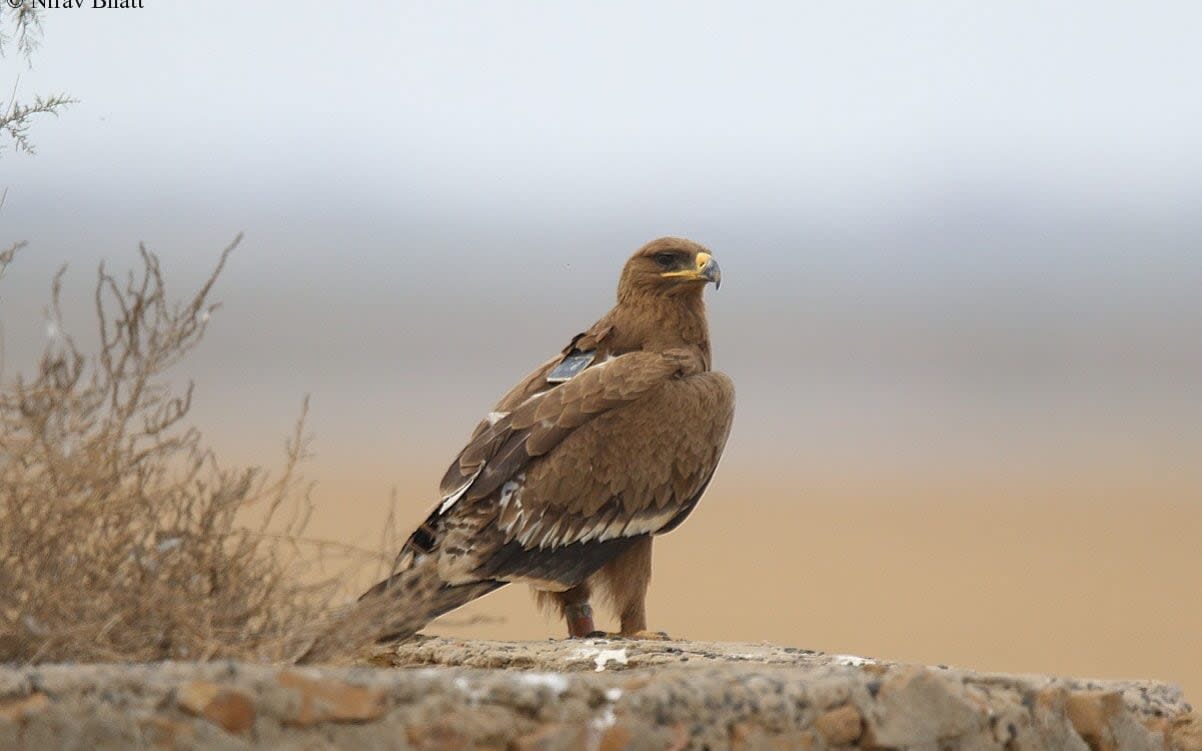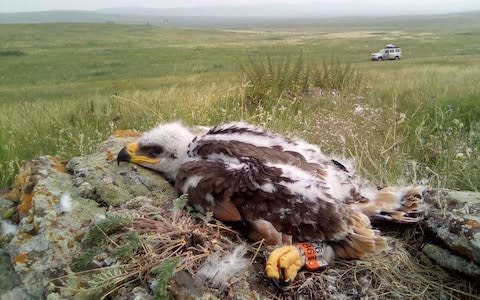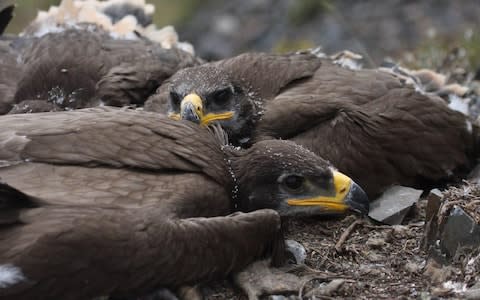Eagle nearly bankrupts Russian tracking programme with roaming text messages

A steppe eagle has nearly bankrupted a Russian bird-tracking programme with roaming text messages after he flew to Iran and began transmitting backlogged GPS data.
Scientists from the Siberian Environmental Centre were forced to turn to crowdfunding, with donations flooding in since the story made national news.
Named “Min” after his birthplace near the city of Minusinsk, the steppe eagle was fitted with a GPS tracker powered by a miniature solar panel in 2018. A project by the Russian Raptor Research and Conservation Network is tracking 13 of the endangered eagles to better understand what threats they face during their migration south to countries in Africa, the Middle East and Central Asia.
Outfitted with a mobile phone card, the tracker takes an eagle's location 12 times a day and texts the coordinates to the researchers' number in four messages. If the bird is outside mobile coverage area, as is often the case, it stores the data to text once it comes back in range.
After spending most of this summer out of coverage in western Kazakhstan, Min flew to Iran so quickly earlier this month that his tracker still couldn't get a mobile connection.
Once he landed near a rubbish dump in Iran, it began sending hundreds of text messages of GPS data, costing the programme's shoestring budget up to 7,000 roubles (£85) a day. Each text from Iran is priced at 49 roubles, about 25 times more than in Russia and three times more than in Kazakhstan.

Min's data quickly used up all the researchers' phone credit, which had already been depleted by three other eagles that flew to Iran, Tajikistan and Turkmenistan, SibEco Centre ornithologist Yelena Shnaider told The Telegraph. The researchers even had to take out a loan.
“He wasn't in touch all summer … We were happy to get a text from him,” she said. “We had expected to get it from Kazakhstan but suddenly he's in Iran, and we started to get his summer locations at three times the price.”
“But Min's a good boy, about a week ago he left Iran and went to Saudi Arabia where it's cheaper,” she added.
Since she called on supporters to “put money on the eagle's phone,” more than 250,000 roubles (£3,000) have been raised, enough to track all 13 birds through the end of the year.
Featured on the flags of Egypt and Kazakhstan, the steppe eagle can have a wingspan of more than seven feet and preys upon small mammals and birds in the plains and deserts of Eurasia.
It was once found as far west as Ukraine, but its numbers have plummeted in recent years. The species was updated to critically endangered on the IUCN red list in 2015, thanks in part to Russian tracking programmes.

During a long yearly migration south to countries in Africa, the Middle East and the Indian subcontinent, the bird often comes across dangerous power lines or poison traps that farmers put out for wolves and other predators. Not above scavenging from carcasses, it is also highly vulnerable to the veterinary drug diclofenac, which has already killed off 99 per cent of India's white-rumped vulture population.
Tracking the steppe eagles will help environmentalists identify problem areas, Ms Shnaider said. Farmers can be fined for putting out illegal poisons, and companies can be pressured to put bird protecting insulation around power lines.
“During wintering and migration the steppe eagle meets many dangers, and we can't neutralise these dangers across its whole range, but we can focus our efforts on concrete points,” she said. “The main threats are poison and electrocution and illegal hunting, too.”

